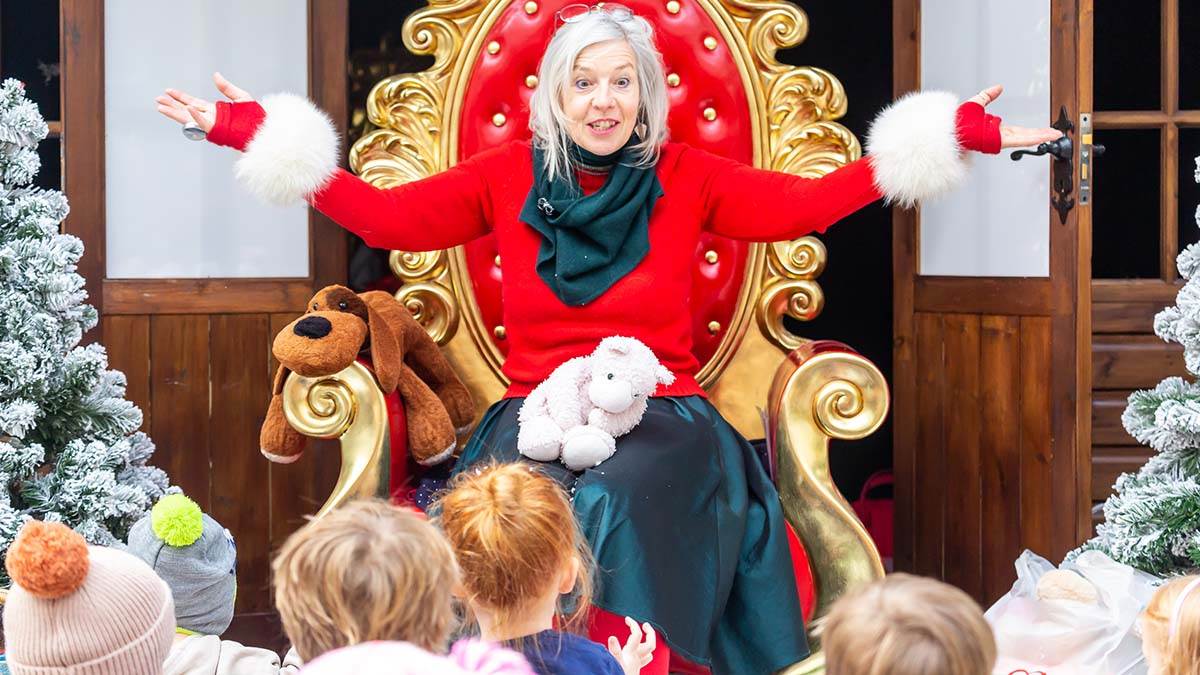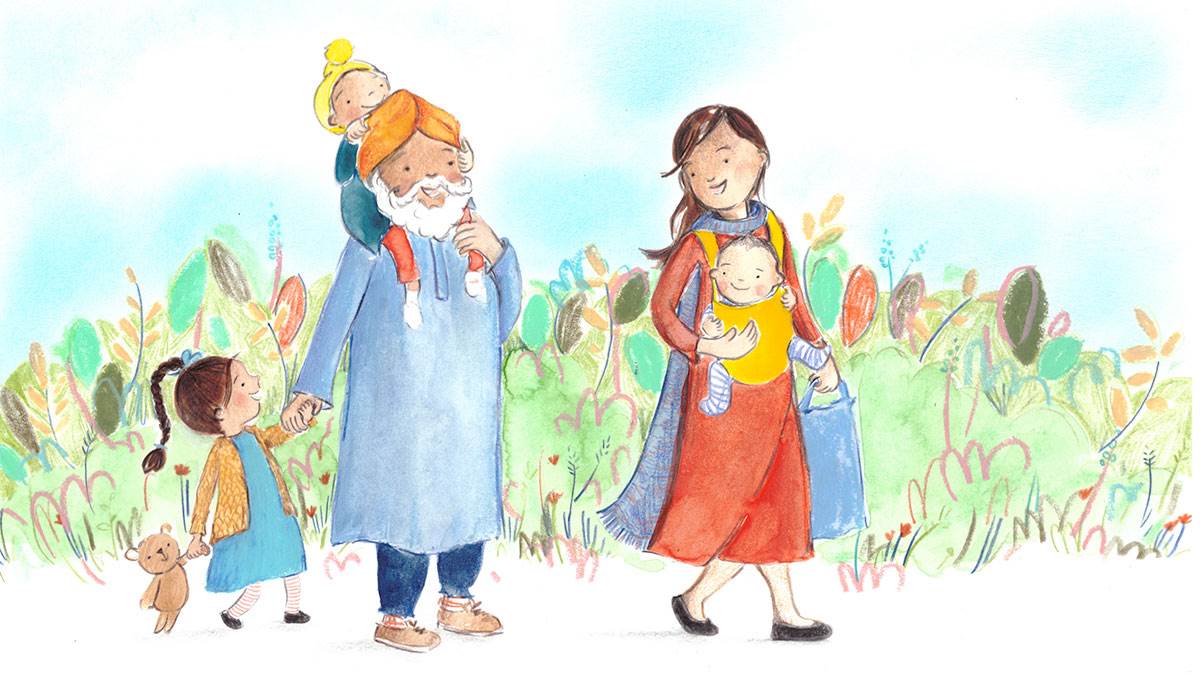Top tips for engaging young children with stories, songs and rhymes
Published on: 07 November 2023
Storyteller Danyah Miller has some top tips for delighting little ones during story time.

Photo © Alex Rickard
Sharing stories with young children is one of the most joyful and life-affirming activities we can do, benefiting both the listener and the teller.
If you think back to the stories you were told when you were little, it's likely to be the feeling of a story and its teller – rather than the story itself – that you remember. What we're sharing with children is our time and our love.
In the early years, songs, rhymes, finger games and stories are the bedrock on which literacy and learning are founded, opening the possibility to a life-long love of reading. Listening to stories – either told as an oral story or from a book – is crucial for speech and language development and healthy brain development, supporting children's mental, emotional and physical well-being.
Different stories are appropriate for different ages
There are many types of story, from fairy tales, fables, myths and legends to biographical and spontaneous stories. Young children up to the age of six years particularly benefit from stories that unify and conclude in a kind or happy way.
For babies from birth to around three years old, lullabies, songs, rhymes and finger games are the first stories which provide a sense of the rhythm of life, while also laying down the foundations for language acquisition. I particularly like This Little Puffin: A Treasury of Nursery Rhymes, Songs and Stories, which is packed full of wonderful songs and rhymes for every occasion.
Children from about three to six years old love cumulative rhymes and tales, folk tales, simple fairy tales, and nature tales.
Explore our nursery rhyme booklist
Making up your own stories

Sharing a story you know well or making one up without the aid of a book might seem scary at first, but it can be simple and is very satisfying for the child. Here are seven suggestions from me:
1. There's no need to add too much 'drama' into stories for young children. They'll be able to create inner pictures much more easily if you don't overdo it! Balance bright, energetic songs and stories with quieter, more reflective ones to create a wonderful rhythm, similar to breathing in and breathing out.
2. Children love repetition. It's as a result of this story and rhyme repetition, over time, that children learn the most. I suggest you repeat the songs and rhymes you're sharing two or three times so that the child can join in. If you move on too quickly, you miss the opportunity for them to imitate and practise.
3. Using the seasons to help you choose stories increases the power of the story exponentially. For example, if you've shared a story about an apple tree in the autumn, and the child then sees a real apple tree, and helps you to pick, slice and eat the apple, this turns into a magical experience – especially if you subsequently retell the story!
4. Clear gestures used alongside rhymes and songs will strengthen their muscles of memory and imagination. Gestures can slow the world down, bringing our minds and bodies into harmony. Think about the gestures in advance so you can ensure that you keep them the same for each repetition.
5. Choose songs, rhymes and stories that you already know and then learn a couple more each season to add to your repertoire. If you share them regularly, they'll be at your fingertips when you need them. If I'm concerned I won't remember a new rhyme, I write it up, pin it discreetly on the wall and look at it without the children seeing to keep me on track!

Photo: The Other Richard
6. Be authentic and don't compare yourself to others. We all have our own storytelling style and voice so let's celebrate and honour our uniqueness.
7. Why not make up a story about everyday life, linked to the season? Here's an example of a 'song story' for the autumn. Begin in the home, where mum / dad / aunt / uncle / grandparent and child live. Describe it briefly – maybe it's somewhere local.
Today they're off to the park (meadow) for an adventure.
The sun is shining
The sky is blue
I'm going on an adventure
You may come too
Can you hear the birds singing? The family run along the grass kicking the leaves away... Oh, here's our pony / boat, let's
Trot along My Little Pony (or Row Row Row your Boat)
Describe the journey to the park by what you can see, hear, smell or touch. Keep it simple.
Here we are in the park / meadow
Two Little Dickie Birds sitting on a wall
Here is a tree with its leaves of green
Here are the apples that hang between
When the wind blows, down they all fall
Here is a basket to gather them all
Repeat each song or rhyme with clear gestures. The family meet different animals, such as a duck, squirrel and sheep. Find songs or rhymes to match, like Can You See The Little Ducks Swimming In The Water or Baa Baa Black Sheep.

Illustration: Fiona Lumbers
Then it's time to go home, meeting the animals in reverse. Repeat the songs or rhymes to give pleasure to the child.
At home they make apple crumble from the apples they picked and they lay the table - here, you could sing Polly Put the Kettle On or I'm A Little Teapot.
Here's a cup and here's a cup
And here's a pot of tea.
Pour a cup and hold a cup and have a drink with me.
Remember repetition and gesture.
Now it's time for bed
The sun is sinking over the hill
The fairies are sleeping
The world is all still
To finish, share a good night song like Twinkle Twinkle Little Star, or something similar.
This kind of framework can be used repeatedly, adding different animals or adventures each week and with each new season.
We know that sharing stories, with and without a book, is of significant benefit to young children. Ultimately, what we want them to remember is that they are safe, cared for and loved.
Seven Secrets of Spontaneous Storytelling by Danyah Miller, with foreword by Michael Morpurgo, is out now.





